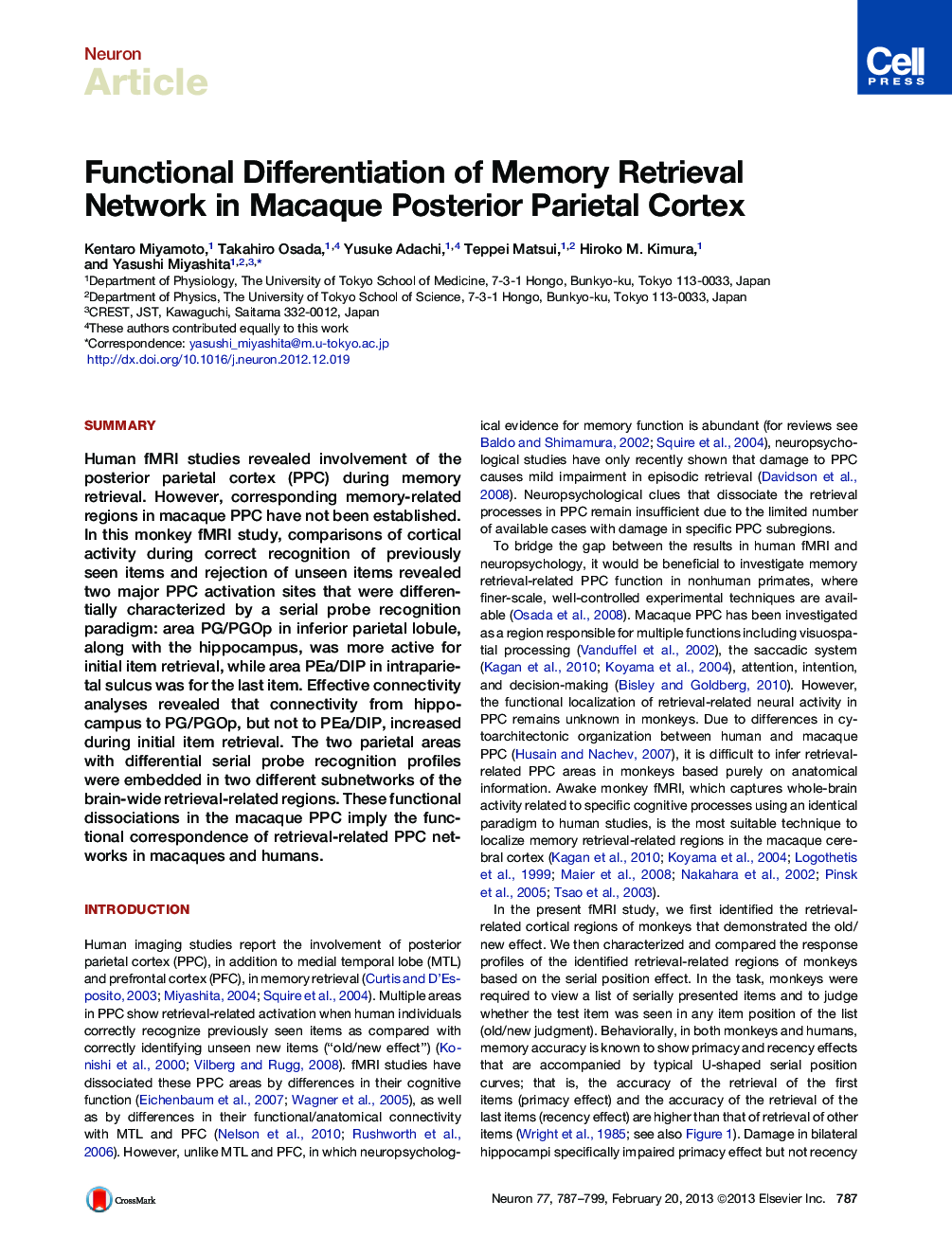| Article ID | Journal | Published Year | Pages | File Type |
|---|---|---|---|---|
| 4321372 | Neuron | 2013 | 13 Pages |
SummaryHuman fMRI studies revealed involvement of the posterior parietal cortex (PPC) during memory retrieval. However, corresponding memory-related regions in macaque PPC have not been established. In this monkey fMRI study, comparisons of cortical activity during correct recognition of previously seen items and rejection of unseen items revealed two major PPC activation sites that were differentially characterized by a serial probe recognition paradigm: area PG/PGOp in inferior parietal lobule, along with the hippocampus, was more active for initial item retrieval, while area PEa/DIP in intraparietal sulcus was for the last item. Effective connectivity analyses revealed that connectivity from hippocampus to PG/PGOp, but not to PEa/DIP, increased during initial item retrieval. The two parietal areas with differential serial probe recognition profiles were embedded in two different subnetworks of the brain-wide retrieval-related regions. These functional dissociations in the macaque PPC imply the functional correspondence of retrieval-related PPC networks in macaques and humans.
► Macaque posterior parietal activities were identified in recognition memory retrieval ► Serial probe recognition revealed contrasting activity profiles of PGOp and DIP ► PGOp and DIP were embedded in distinct brain-wide networks in task/spontaneous state ► A counterpart of human IPL memory retrieval region was found in macaque PPC
